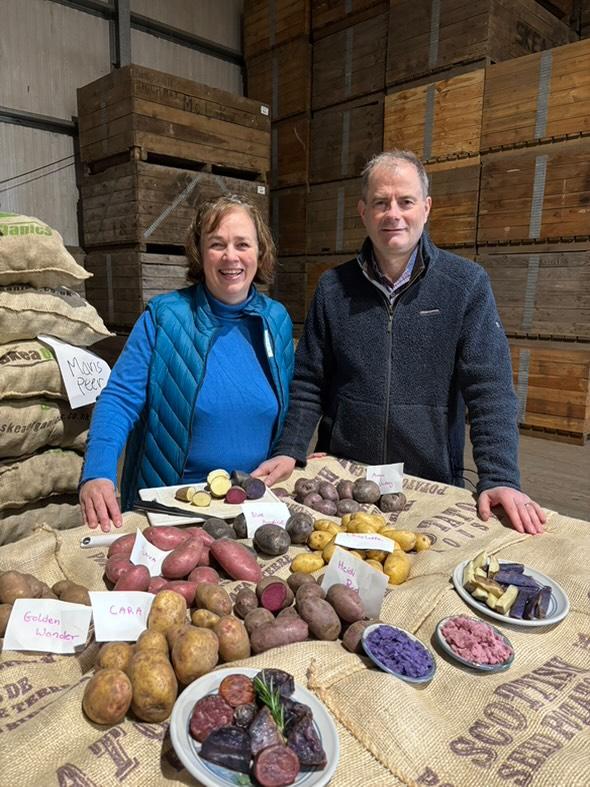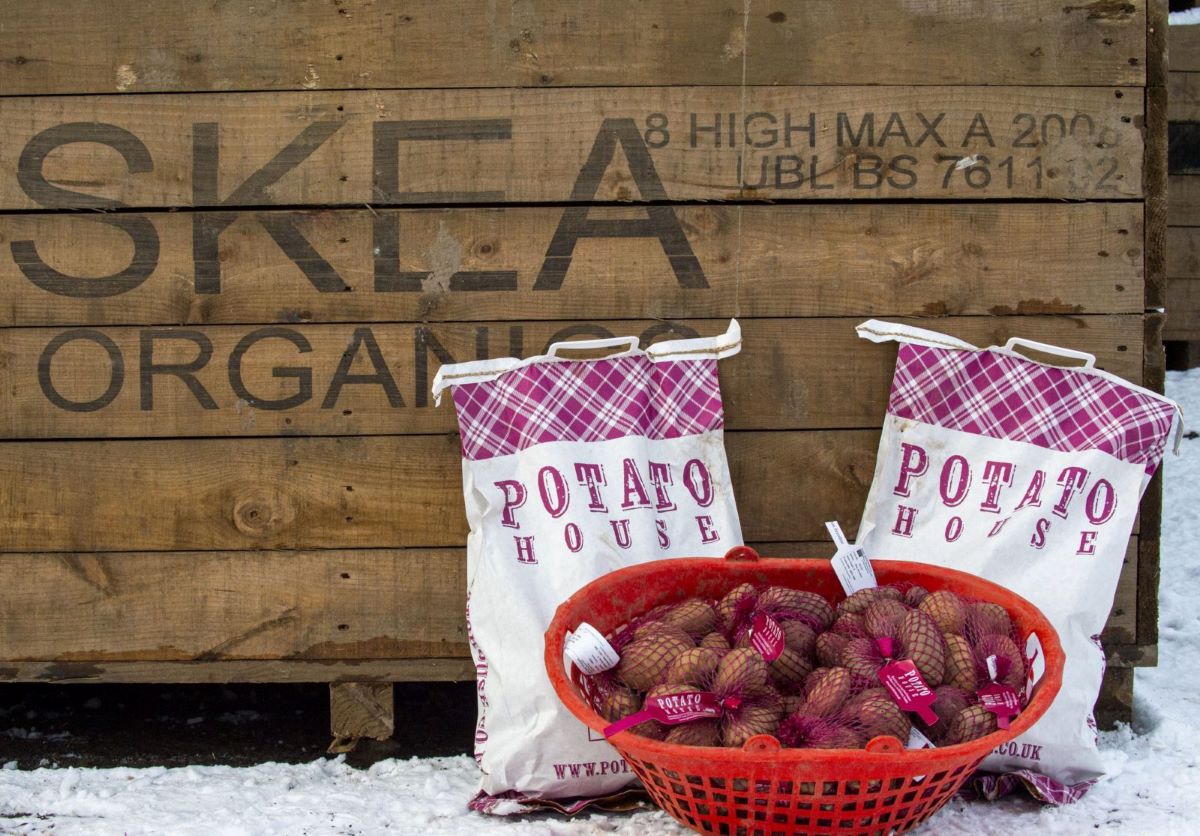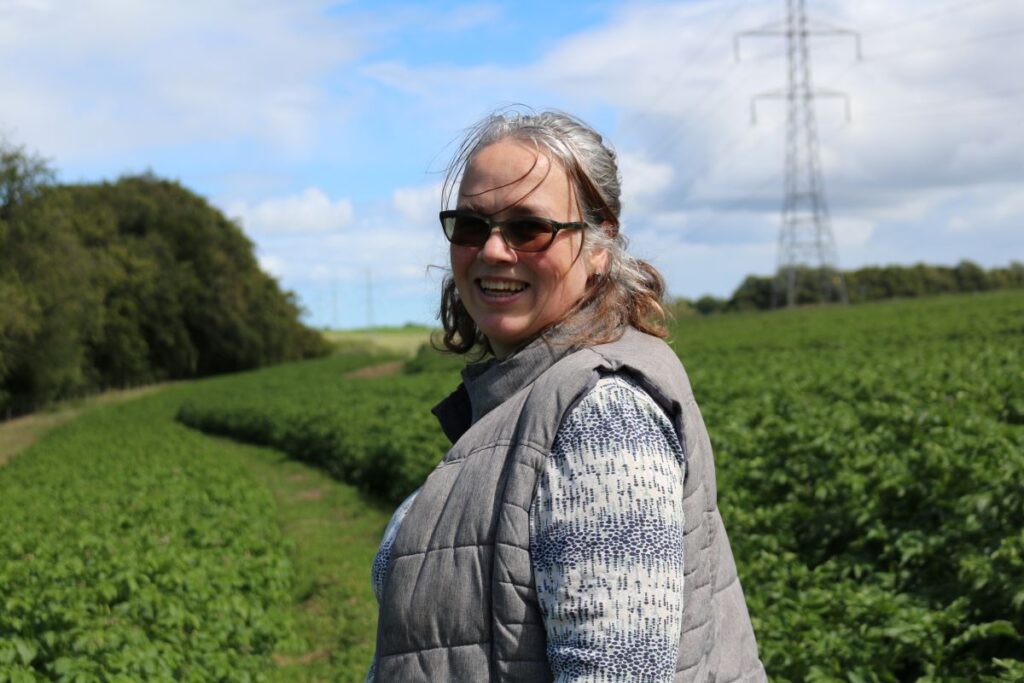We have all heard of the popular potato varieties, like King Edwards and Charlottes, but what about the tatties of our past?
For potato growers, Amy and Andrew Skea, their mission is to reignite our love for heritage potatoes – the brightly coloured, knobbly ones that our grandparents ate 50 years ago but over time have fallen out of favour.
Andrew’s grandfather began harvesting seed potatoes in Glenisla, Perthshire, in the 1960s. In 2010 Andrew started Skea Organics, a seed potato grower and supplier.
Years later Andrew and Amy decided they wanted to be able to service smaller orders for gardeners and allotment growers and came up with the idea for Potato House, a side of the business dedicated to small passionate growers who are looking for seed potatoes with unique taste and specific characteristics.
They now grow more than 80 varieties of potatoes for growers, including many heritage varieties like Edzell Blue, Shetland Black and Arran Victory (the best potato for roasties, according to Amy) which was bred on Arran to commemorate the end of WW1.
The pair are proud to help to keep these varieties alive and some are so rare that only a handful of farmers grow them.

Credit: Small Business Saturday
‘We are mainly a seed potato producer and supply seed potatoes to gardeners and allotment holders across the country via our webpage,’ Amy said.
‘Many gardeners want to experiment with varieties not usually found in supermarkets and come to us for the range we offer.
‘Some people are looking for a specific potato that they perhaps remember their grandparents growing.’
These older varieties date from pre 1950 and remind us of ‘what a potato should taste like’, Amy says.
‘Potatoes from more than 50 years ago taste earthy unlike modern varieties that are bred to be disease resistant and have become tasteless in the process,’ she said.
‘Consumers are now so used to seeing white round potatoes in supermarkets, we forget that 50 years ago there were many different varieties of all shapes, colours and sizes.
‘People love the taste of heritage potatoes. Many say that potatoes from more than roughly 50 years ago taste earthy and how they should.
‘How you cook a coloured or heritage potato depends on the type of potato rather than its colour.
‘If you have ever tried to make a mash that simply wouldn’t, or your boiled potatoes have disintegrated, it is probably due to you using the wrong potato type rather than your cooking skills.
‘In general a waxy/salad potato is what we think of when new potatoes are mentioned, and a fluffy one is for chips and roasties. A smooth one is in-between and makes great mash.

‘Just as a white potato varieties fall into different cooking types, coloured or heritage varieties also fall into these types.
‘Growing or cooking these heritage potatoes takes no extra skill and so give these varieties a go!’
The potato breeders of the late 18th and early 19th century were almost all Scottish and mostly lived in Scotland for their breeding programmes.
‘Scotland is good for growing seed potatoes because the maritime summer climate is cooler than many other potato growing regions allowing crops to thrive at a significantly lower risk of viral disease,’ Amy said.
‘These diseases are spread by aphids. Aphids are the small insects which transport the spores of viral diseases throughout potato crops, allowing infection to spread easily.
‘The naturally cooler climate of Scotland, not only in summer months but also during the winter months of January and February, reduces and postpones the development of aphids.’
Amy and Andrew have also recently acquired a recipe site dedicated to potatoes, with more than 230 recipes with potatoes as the star attraction.
You can find out more at www.potatohouse.co.uk
Read more Producer’s Corner here.
Subscribe to read the latest issue of Scottish Field.
TAGS


